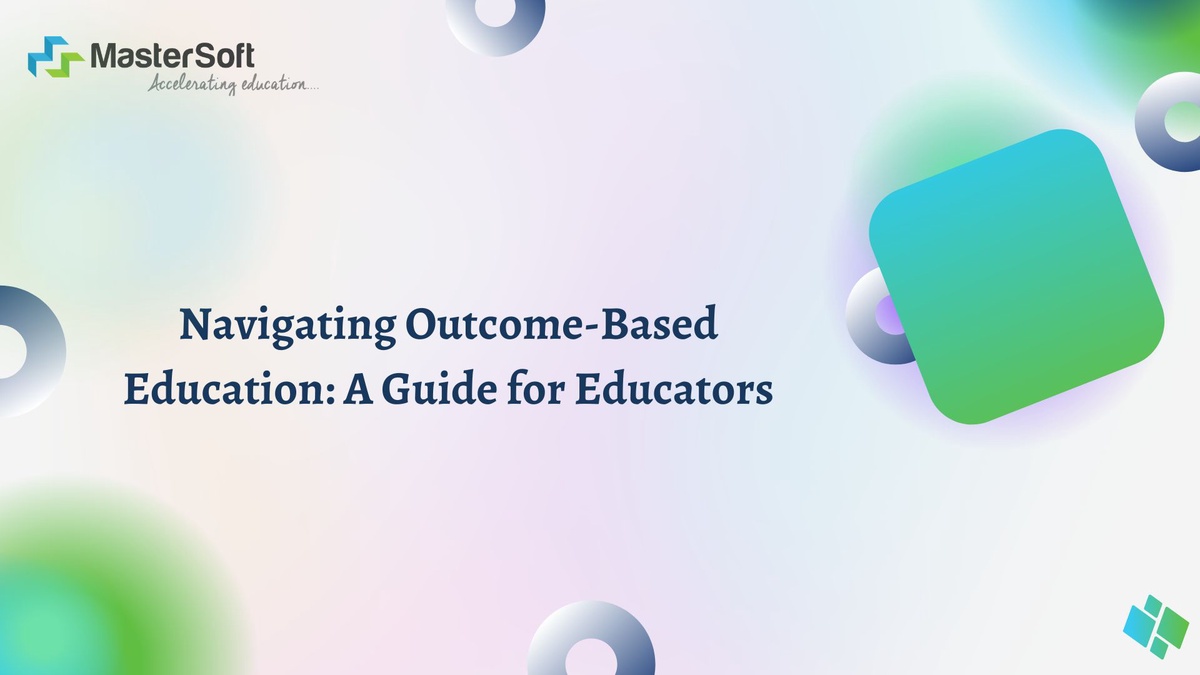In the dynamic landscape of education, the quest for effective teaching methodologies and student-centered approaches is unceasing. Among the myriad pedagogical frameworks that have emerged, Outcome-Based Education (OBE) stands out as a transformative paradigm that places emphasis on clearly defined learning outcomes and student mastery. For educators navigating this terrain, understanding the principles and practices of OBE is paramount. In this comprehensive guide, we delve into the nuances of Outcome-Based Education, offering insights, strategies, and practical tips to empower educators in implementing OBE effectively.
Understanding Outcome-Based Education
At its essence, Outcome-Based Education shifts the focus from traditional content-centric teaching to a more holistic approach centered around predetermined learning outcomes. These outcomes delineate the knowledge, skills, and competencies that students are expected to acquire by the culmination of a learning experience. By anchoring instruction and assessment to these predefined outcomes, OBE aims to ensure that students attain mastery and demonstrate tangible competencies.
Clarifying Learning Objectives
A fundamental aspect of Outcome-Based Education is the articulation of clear and measurable learning objectives. These objectives serve as guideposts for educators, informing instructional design, assessment development, and curriculum alignment. When crafting learning objectives, educators should strive for specificity, measurability, achievability, relevance, and time-bound nature (SMART criteria). By clearly defining learning objectives, educators provide students with clear expectations and facilitate meaningful learning experiences.
Designing Authentic Assessments
In the realm of Outcome-Based Education, assessments serve as crucial tools for gauging student progress and mastery of learning outcomes. Unlike traditional assessments that focus solely on content recall, OBE advocates for the development of authentic assessments that mirror real-world scenarios and require the application of knowledge and skills in contextually relevant situations. Performance tasks, project-based assessments, portfolios, and simulations are examples of authentic assessment methods that align with the principles of OBE.
Aligning Curriculum and Instruction
Central to the success of Outcome-Based Education is the alignment of curriculum, instruction, and assessment. Educators must ensure that instructional strategies, learning activities, and assessment methods are explicitly aligned with the predetermined learning outcomes. This alignment fosters coherence and consistency across the educational experience, enabling students to make meaningful connections between what they learn, how they learn, and how their learning is assessed.
Embracing Differentiated Instruction
Recognizing the diverse needs, learning styles, and abilities of students, Outcome-Based Education advocates for the adoption of differentiated instruction strategies. Educators should tailor their instructional approaches to accommodate individual differences, providing scaffolding, enrichment, and support as needed. Differentiated instruction promotes inclusivity, engagement, and personalized learning experiences, ultimately enhancing student outcomes and fostering a culture of equity and excellence.
Fostering Continuous Improvement
In the spirit of Outcome-Based Education, educators are encouraged to embrace a growth mindset and a commitment to continuous improvement. Regular reflection, feedback, and data analysis are integral components of the OBE framework, allowing educators to identify areas for refinement and enhancement. By leveraging assessment data, student feedback, and best practices, educators can iteratively improve their instructional practices and optimize student learning outcomes.
Cultivating Lifelong Learners
Beyond the acquisition of content knowledge and skills, Outcome-Based Education aims to cultivate lifelong learners who are equipped with the requisite competencies for success in a rapidly evolving world. By emphasizing critical thinking, problem-solving, communication, collaboration, and adaptability, OBE nurtures students' capacity for independent inquiry, self-directed learning, and intellectual growth. Through authentic learning experiences and real-world application, students develop the resilience and resourcefulness needed to navigate complex challenges and thrive in diverse contexts.
Overcoming Challenges
While Outcome-Based Education offers numerous benefits, its implementation may pose challenges for educators. Adequately defining learning outcomes, designing authentic assessments, and ensuring alignment with curriculum standards require careful planning and collaboration. Additionally, addressing the diverse needs of students and managing logistical constraints may present hurdles along the way. However, by fostering a culture of collaboration, resilience, and innovation, educators can overcome these challenges and harness the transformative potential of Outcome-Based Education to enhance student learning outcomes.
Conclusion
In conclusion, navigating Outcome-Based Education requires a deep understanding of its principles, practices, and pedagogical implications. By anchoring instruction and assessment to clearly defined learning outcomes, educators can empower students to achieve mastery and demonstrate tangible competencies. Through differentiated instruction, authentic assessments, and continuous improvement, educators create inclusive and engaging learning environments that foster lifelong learning and success. As educators embark on this journey of pedagogical transformation, let us embrace the principles of Outcome-Based Education and strive to unlock the full potential of every learner, guiding them towards a future of limitless possibilities.


No comments yet